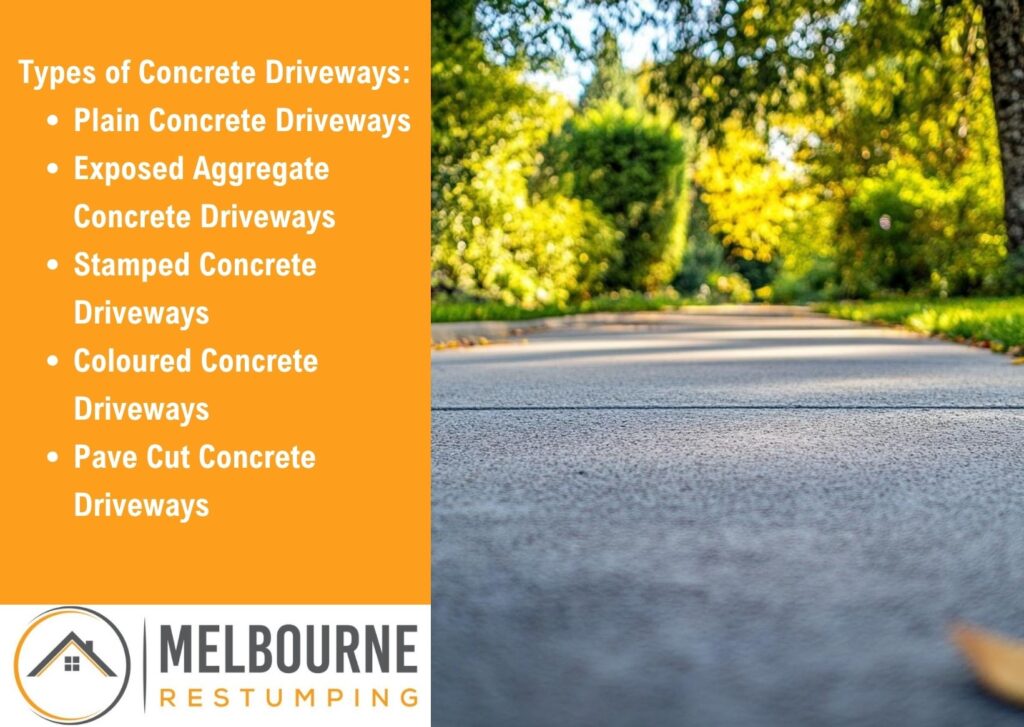Choosing the right concrete finish shapes how your driveway looks and performs for years. Homeowners rely on driveway concreters to deliver finishes that handle daily use, weather, and long-term wear. Whether you prefer a clean, classic look or a textured, decorative surface, understanding each option makes decisions easier.
In this blog, we’ll discuss the most common driveway types, how to select the right one, what influences your choice, and tips to maintain each style.
Types of Concrete Driveways
The types of concrete driveways are plain, exposed aggregate, stamped, coloured, and concrete pavers. Let’s take a closer look at each one below:
Plain Concrete Driveways
Plain concrete offers a smooth, uniform surface ideal for a clean, functional driveway. It suits homes needing reliable access and low upkeep. With proper sealing, it handles vehicles, foot traffic, and weather with ease.
Exposed Aggregate Concrete Driveways
Exposed aggregate delivers a textured, slip-resistant surface by revealing stones and pebbles in the mix. It’s one of the most durable finishes available and adds visual depth to any layout. For those exploring concrete driveway ideas, this is a standout option.
Stamped Concrete Driveways
Stamped concrete mimics brick, stone, or tile using moulds and colour treatments. It brings a decorative touch without compromising durability. Ideal for patterned finishes that suit heritage or modern homes.
Coloured Concrete Driveways
Coloured concrete comes in a wide range of tones mixed into the batch or applied as a surface treatment. It adds curb appeal while keeping the surface simple and functional. Colours can be matched to landscaping, render, or fencing.
Pave Cut Concrete Driveways
Concrete pavers offer a modular alternative to poured slabs. Each paver interlocks, creating flexible layouts that resist cracking. They’re often used where drainage, access, or easy replacement matters.

Steps to Choose the Right Type of Concrete Driveway
Here are the steps to choose the right type of concrete driveway.
Step 1: Assess Your Needs and Preferences
Start by looking at how the driveway will be used day to day. Consider vehicle size, foot traffic, and the look you want to match your home’s style. A smooth finish suits minimal designs, while textured options like exposed aggregate offer a more striking appearance.
Step 2: Compare Costs and Maintenance
Work out your budget and check how often each option needs cleaning, resealing, or repairs. Plain concrete costs less upfront, while decorative finishes may save on upkeep over time with the right protection.
Step 3: Decide Between Professional Installation vs. DIY
Think about your skills, time, and tools. Laying and finishing concrete requires experience to get levels, drainage, and curing right. For finishes involving texture or colour, professional concreters deliver a far better result.
Factors Affecting Concrete Driveway Choices
Here are the factors affecting concrete driveway choices:
Understanding Soil Conditions
Soil type under the slab influences stability and drainage. Areas with reactive clay often require deeper concrete footings to prevent cracking and movement.
Impact of Driveway Slope
Driveway slope impacts water runoff and surface wear. A steeper incline may need surface drainage solutions to manage heavy rainfall and avoid pooling.
Considering Local Climate
Climate plays a role in surface durability. Hotter zones benefit from lighter finishes to reflect heat, while cooler regions suit thicker slabs that resist frost damage.
Aesthetic and Design Preferences
Design preferences shape the choice between smooth, textured, or patterned finishes. Decorative finishes like stencilled or spray-on concrete allow visual customisation without compromising strength.
Maintenance Tips for the Different Concrete Driveway Options
These are the maintenance tips for the different concrete driveway options.
Seal Regularly to Protect Surface
Apply a quality sealer every 2 to 3 years to guard against stains, moisture, and surface wear. Choose a finish that complements the type of concrete used.
Clean with the Right Tools
Use a pressure washer or stiff broom for cleaning. Avoid harsh chemicals that may degrade coloured or patterned concrete surfaces.
Repair Small Cracks Early
Inspect for small cracks and joint gaps during seasonal changes. Fill and repair promptly to prevent deeper damage or slab movement.
Avoid Overloading During Early Curing
Keep heavy vehicles off decorative or thin-slab driveways, especially in the first 30 days after pouring. This protects the curing process and surface integrity.

